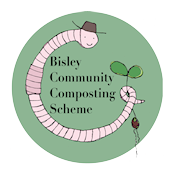
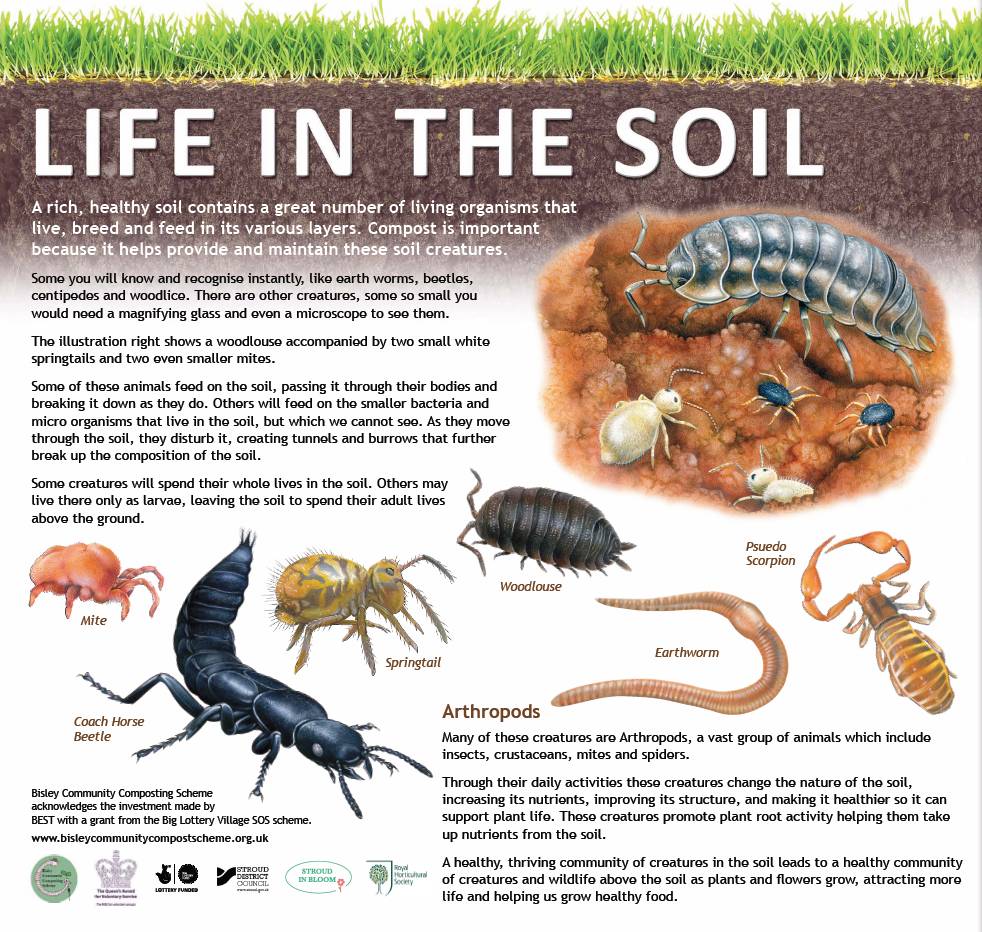
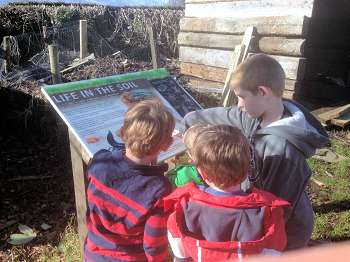
Toby and Wilfred (children of allotment holders the Andrews family ) and their friends Harry and Oscar, learn about and are amazed at the life in the soil
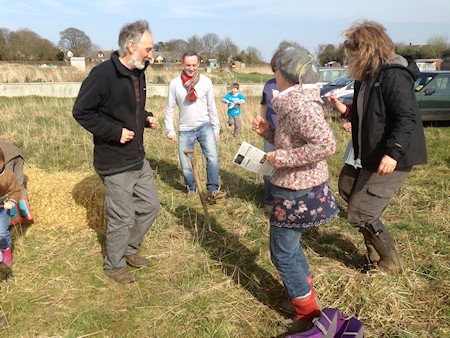
Worm Workshop on Saturday 29 March – led by Fred Miller , Local worm expert, a group of families are here seen “dancing for worms”
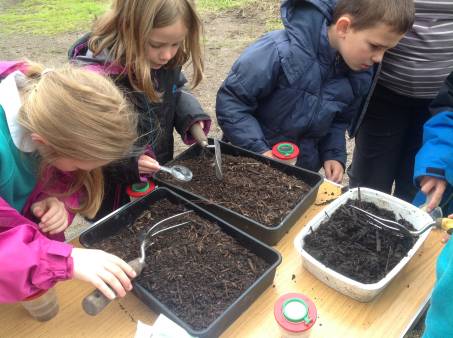
Children from Severn View Primary Academy school looking for microscopic creatures in compost samples as part of a group workshop July 2016
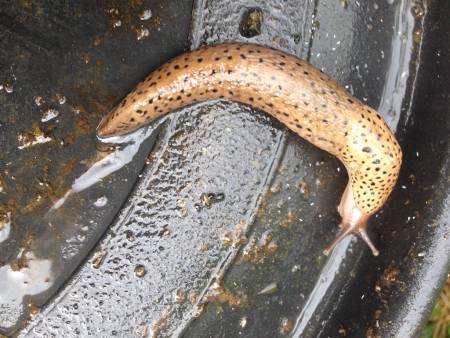
BCCS has found the “Gardener’s Friend” the Leopard Slug ( Limax maximus) in the heaps. The Leopard Slug is a low risk to your vegetables and agricultural crops. Leopard slugs don¹t damage living plants, but eat other slugs including species that can damage garden plants and vegetables. They also eat dead and rotting plants along with fungi and this recycles nutrients and fertilises soil.
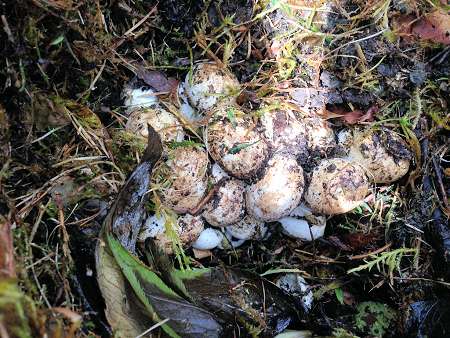
The Grass Snake (Natrix Natrix). The photograph shows grass snake eggs found in one of our heaps on August 3rd 2016. Grass snake eggs are often found in rotting vegetation or compost heaps. The Grass Snake is the UK’s largest snake but it is harmless. It is protected in the UK under the Wildlife and Countryside Act, 1981, and classified as a Priority Species in the UK Biodiversity Action Plan
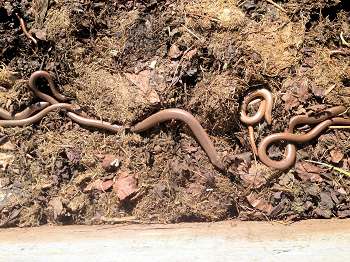
BCCS has a wonderful colony of slow worms. The slow worm is harmless, it is not a snake but a legless lizard (Anguis fragilis). They are fantastic for gardeners because they feed on slugs, snails and other garden pests….so we hope our colony is spreading to help allotment holders. The slow worm can be very long living – up to about 30 years. Sadly the greatest threat to the slow worm on the allotments is the cat. The slow worm is protected, alongside all other native British reptile species. It has been decreasing in numbers, and under the Wildlife and Countryside Act 1981, it is illegal to intentionally kill, injure, sell or advertise to sell them.
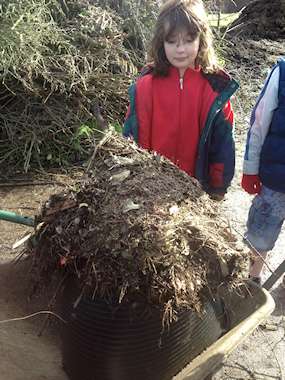
Emily admires a huge woodlouse colony found in the compost
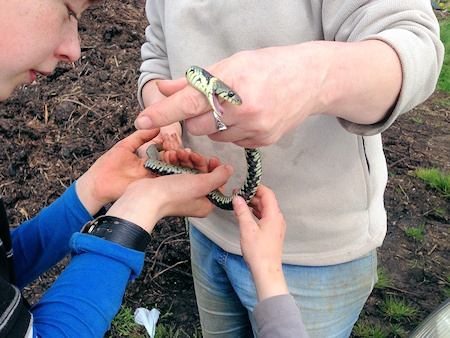
Our largest snake, the Grass Snake, is protected in the UK under the Wildlife and Countryside Act, 1981, and classified as a Priority Species in the UK Biodiversity Action Plan. It likes wetland habitats, but can also be found in dry grasslands and in gardens. Its eggs are laid in rotting vegetation, often in compost heaps. Like all reptiles, Grass Snakes hibernate, usually from October to April. Usually greenish in colour, with a yellow collar and black neck patches. Females are bigger than males. It is not dangerous. The loss of our wild grassland and ponds through human activity threatens the survival of our reptiles. We need networks of wildlife corridors through our villages and countryside. These are good for both wildlife and people. You can help look after grass snakes and other reptiles in your garden by leaving piles of logs for hibernating beneath. The Wildlife Trusts’ ‘Wild About Gardens’ initiative can help you plan your wildlife garden.
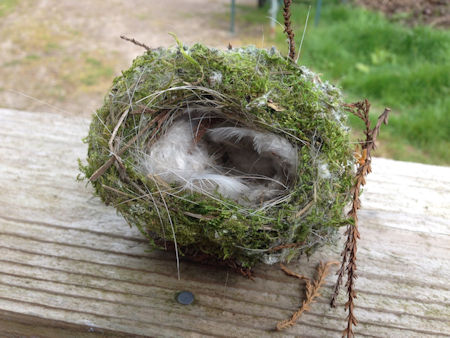
Please help our nesting Birds: BCCS is becoming concerned that it receives a lot of hedgerow materials after the beginning of March. On April 29th 2017 we found this beautiful new nest in a pile of shrubbery on our site. To protect nesting birds it is recommended that hedgerows are cut between November and the beginning of March to protect nesting birds. Farmers abide by these guidelines, so we strongly urge house owners to do the same. Please see http://www.rspb.org.uk/get-involved/community-and-advice/garden-advice/planting/hedges/the_law.aspx It is an offence under Section 1 of the Wildlife and Countryside Act of 1981 to intentionally take, damage or destroy the nest of any wild bird while it is in use or being built. The Farming and Wildlife Advisory Group (FWAG) advocates cutting of hedgerows only in alternate years. This is better for the wildlife, and it cuts down on time and expense. Some species only flower on second year growth, so annual cutting reduces the flowering and subsequent berry crop that wildlife are dependent on.
